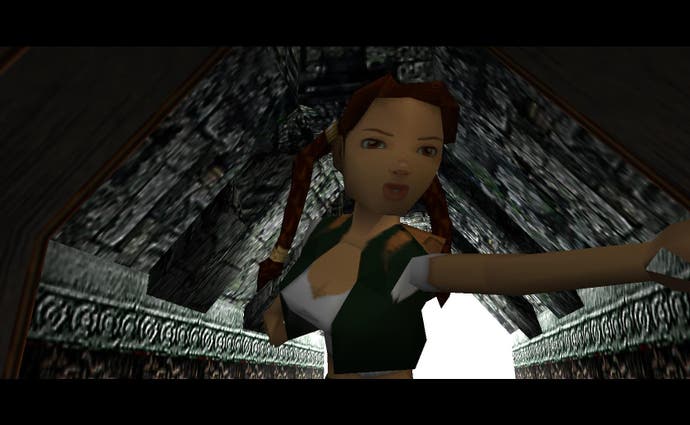Retrospective: Tomb Raider: The Last Revelation
Death becomes her.
Why Tomb Raider IV: The Last Revelation? Tomb Raider I is loved with nostalgia, Tomb Raider II is the best in the first run of the series, Tomb Raider VI (The Angel of Darkness) has the novelty value of being awful beyond explanation, and VII, VIII and IX have all been absolutely superb. So why IV?
Because it has the dumbest ending of any game I've encountered.
Clearly games have worse endings. Some games grind meaninglessly to a halt. Others suddenly declare themselves "to be continued". Many endings are incoherent nonsense that fails to pull together the various threads. But Tomb Raider: The Last Revelation's is the dumbest.
Astute readers will have detected the possibility that this piece may contain the odd spoiler. For instance, Lara dies at the end. Eleven years ago. She's doing well for it.
The Last Revelation is interesting for another reason: it's pretty good. It's easy to forget that. It reviewed reasonably well too, but it was certainly the start of Lara Fatigue, a syndrome entirely the fault of Eidos' over-zealous marketing.
(It was also successful marketing, you can argue. The game went to No. 1 all over the world, and by 1999 everyone in the universe had heard of Lara Croft, even though it was still two years until Angelina Jolie would don the shorts, and waste the second half of the film searching for the second half of an object that must never be united, rather than just smashing the first half and going home for tea.)

Having permeated into the mainstream, you could credit Ms. Croft with an awful lot of the transition of console gaming from niche pursuit to commonplace television company. But of course being popular is a curse, and most people were becoming sick of her. This wouldn't affect reception until the perfectly good fifth game, Tomb Raider Chronicles, which was poorly received simply because it was the fifth game. "Too many," people cried. "Stop releasing these solid, fun games!"
I think The Last Revelation might actually be to blame, as it happens. After Tomb Raider III placed Lara in some modern-world settings, in cities far from any tombs, then-developer Core Design took the series back to Egypt for part four. And in Egypt it stays, Lara's traditional globe-trotting abandoned for a distinctly sandy vacation.
It's Tomb Raider squared, heavily focusing on what she was originally all about, and so, aesthetically at least, a step backward. When Chronicles appeared, everyone had spent as much time robbing yellow tombs as they could face, and despite the fifth game featuring levels in modern office blocks and the like, everyone was exhausted. Exhausted, I contend, by IV.
By this point Core was sticking to its established formula - something Angel of Darkness proved it should have always done. Because when your established formula is huge, fascinating levels, packed with secret tunnels, elaborate puzzles, and enormous multi-threaded tasks, it's something you should be proud to repeat.

Of course, this also meant sticking with controls that led to PC versions of the series always being something of a jumble. Wholly designed for a gamepad, and refusing to accommodate the mouse (since you couldn't turn the camera, a mouse would have been of limited use anyway), it was always a muddled keyboard affair.
However, my first attempt to replay this game was on the Dreamcast, thinking that a more interesting approach. It was certainly interesting. After struggling painfully for over an hour I'd still not cleared the tutorial, so horrendous were the d-pad or analogue controls.
Lara steers like a wayward shopping trolley desperate for a river to die in, determinedly veering off any ledge she can find. Short of installing Samaritans hotlines on every platform, nothing was going to keep her alive. And so to the PC I switched. Where the 360 pad was no better.
And then I remembered! My patented Tomb Raider control method, which had done me proud throughout the nineties. I've described it to people before, and they've always thought me mad. But once again it proved to be the only reasonable way to play.





